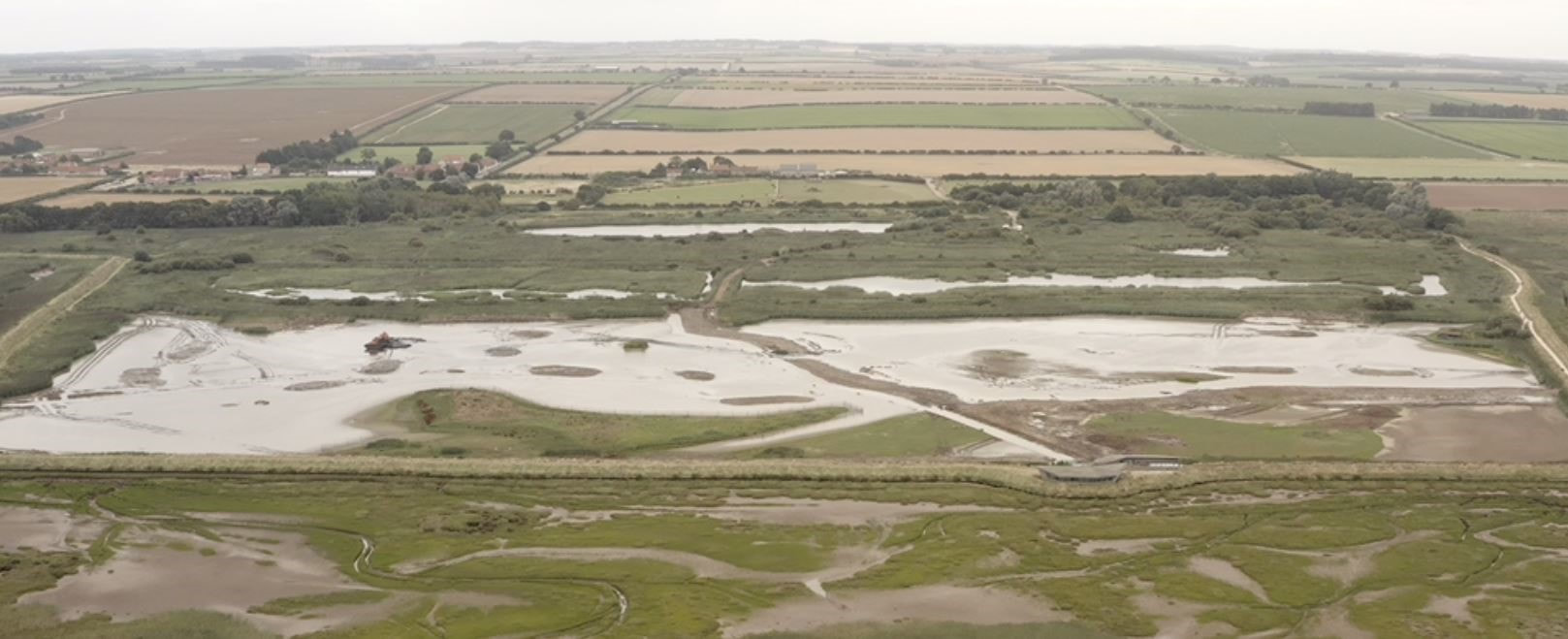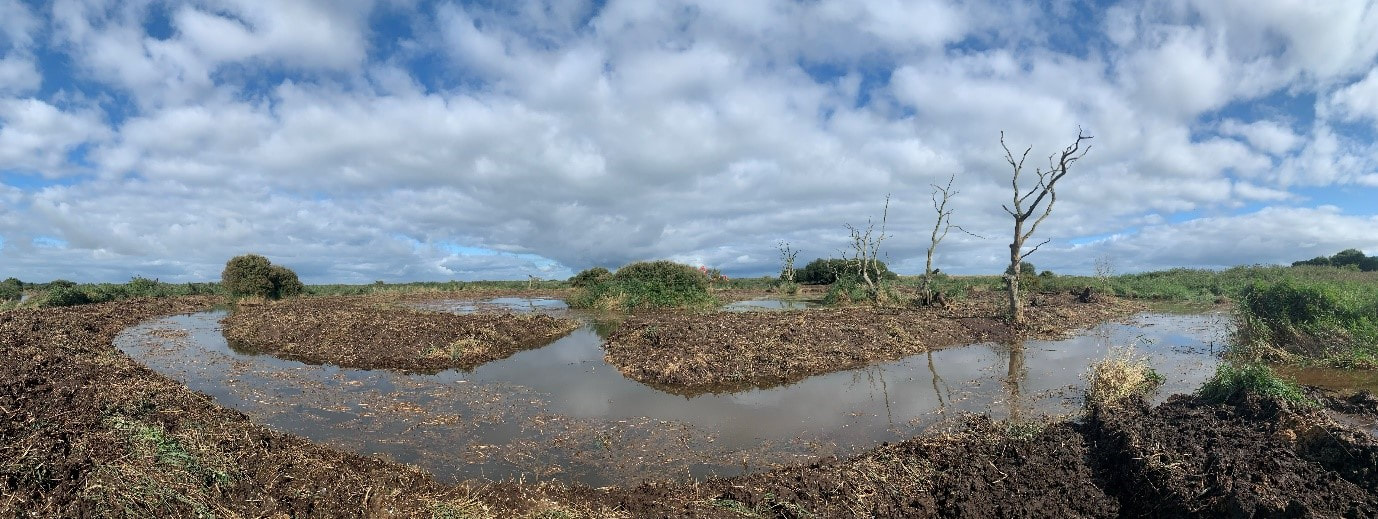|
Blog by Lizzie Bruce, NW Norfolk Reserves Warden Ten years ago, the Titchwell Marsh Coastal Change project was completed to protect the freshwater habitats from coastal erosion and rising sea levels. The project realigned and strengthened the sea defences that surround the freshwater marsh and reedbed and a new area of tidal saltmarsh, a natural sea defence, was created on the northern side of the Parrinder Bank. The completion of the Coastal Change project has safeguarded the freshwater habitats from saltwater incursion for generations to come. The time is now right to restore and enhance the freshwater habitats within for the wetland species that are dependant upon this habitat. The freshwater marsh is home to the iconic avocet and acts as an important service station for migrating waders. In August, using two amphibious excavators, the single freshwater marsh compartment was split into three with new water control structures installed. This will allow the freshwater marsh to be managed on a constant rotational basis ensuring a plentiful supply of food for breeding avocets, migrating waders and wintering wildfowl. In addition, a series of new nesting islands has been created and a new predator fence installed to improve the breeding success of avocets and common terns but could also attract new breeding birds for the reserve, such as sandwich terns. The second part of the project aims at restoring the freshwater reedbed. The reedbed at RSPB Titchwell Marsh was integral in ensuring the bittern didn’t become extinct in the UK when their population dropped to just 11 booming males in the 1990’s. However, despite the overall conservation success of this species in the UK with more than 200 booming males today, RSPB Titchwell Marsh has not recorded a breeding pair for 10 years. This project will restore the freshwater reedbed by repairing eroded banks, recreating a network of ditches and ponds, and installing new water control structures. The restoration work will improve the habitat to not just benefit bitterns but enhance the wetland for other species such as bearded tits, water voles, eels and a variety of invertebrates. An exciting element of the reedbed restoration will be one of the first of its kind in the UK; to create ‘Spoonbill Islands’ for the small but growing breeding population of spoonbills in the UK, and on the Norfolk coast. A series of islands surrounded by a moat have been created which will then be planted with a mixture of trees to create scrubby islands for spoonbills to nest in. Spoonbills were once a common sight in East Anglia featuring in medieval banquets. But as the Fenlands were drained, these distinctive birds lost their home and became a desirable species for egg collectors and hunters, resulting in them becoming extinct in 1668. As the Dutch population rapidly grew, in 1999 the first pair for 300 years bred in the UK, but it took a further 11 years for a colony to form at Holkham National Nature Reserve in Norfolk. They have since become a regular site on the Norfolk coast including at Titchwell Marsh. The project commenced in August 2021 and will be completed by the end of October, in readiness for the arrival of the wintering wildfowl.
0 Comments
Leave a Reply. |
Archives
April 2024
Categories
All
Photo credits: Oystercatcher by Katie Nethercoat (rspb-images.com)
LOTE Logo credits: Saskia Wischnewski |



